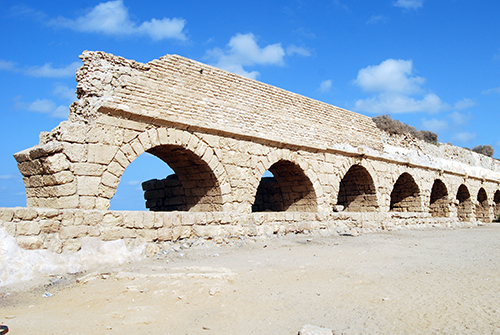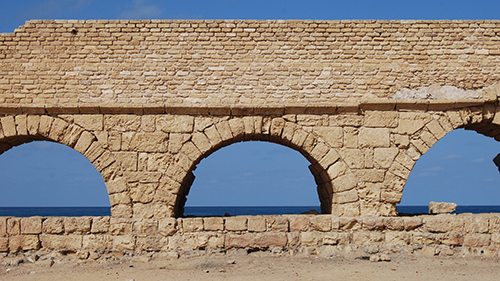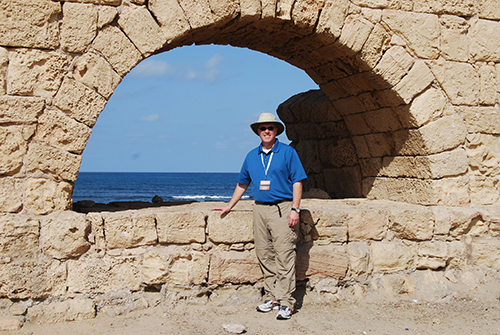

by Barry Britnell
Synopsis: Discussing the challenges that King Herod faced in providing water for the city of Caesarea, Barry marvels at the ingenuity of ancient civil engineers in providing a solution.
During the first century, the city of Caesarea served as the Roman administration center for the province of Judea. As a result, it experienced a tremendous amount of growth. Historians estimate that Caesarea had a population of more than 100,000 people. This created many civic logistical issues, the chief of which was providing clean drinking water for everyone.
King Herod was a builder, and also a dreamer. He used both characteristics and the resources at his disposal to accomplish his mission. In this case, King Herod found the water source needed to solve his problem. Yet, he soon faced another issue: The water source was a spring near the base of Mount Carmel approximately ten kilometers (six miles) northeast of the city.
Undeterred, King Herod came up with a plan. He constructed an aqueduct to transport the water from the spring into the city. Once inside the city, the water was collected into a large cistern/pool and distributed to the people as it was needed.
Think about the engineering skills that would have been required to accomplish such a feat. There were no water pumps. There was no electricity. The spring could not have been more than a few hundred feet in elevation. The only way to get the water from the spring into the city was by the use of gravity. The aqueduct had to be constructed in such a way that water continually ran downhill until it arrived in the coastal city of Caesarea.
To make the math easy, let us say that the elevation of the spring was 200 feet above sea level, and the length of the aqueduct was six miles. From your junior-high science class, you will recall that one mile contains 5,280 feet. Multiplying that number by six reveals the total length of the aqueduct would be 31,680 feet.
Therefore, what would the slope of the aqueduct need to be? Dividing 31,680 by 200, you arrive at a slope of approximately 150:1. In other words, for every 150 feet in length, the aqueduct could only drop a single foot in elevation. If it falls more quickly than that, then the water would never arrive in the city. That is incredible to consider. Keep in mind that you would also have to account for various contours in the land as the aqueduct stretched its way to the destination.
Despite the fact that they did not have computers, calculators, or many of the conveniences that we enjoy today, this aqueduct was built so well that it supplied water for hundreds of years. In all honesty, it is simply amazing. We truly do not give those first-century engineers enough credit for their brilliant minds.
Visitors to Israel today can see the Caesarean aqueduct at a few different locations. The best place to view it is along the coast of the Mediterranean Sea, a few miles north of the city of Caesarea. From that vantage point, you have the ability, not only to look at this beautiful structure, but also to climb onto it and admire the technical and physical labor required to build it. People who look closely will figure out that there are two aqueducts located next to each other. A little over a century later, Hadrian had a second aqueduct built next to the original one to supply more water to the ever-growing city.
Author Bio: Barry is the founder of Exploring Bible Lands, LLC and leads Bible study tours to the land of Israel. He also works with Appian Media to produce Biblically-sound videos used in teaching others about the Bible. He and his wife, Tabatha, have three children, and live in Athens, AL, and worship with the Capshaw church of Christ. He can be reached at barry.britnell@exploringbiblelands.com.

Image 1: The aqueduct Herod built at Caesarea-Maritima brought water from the Shuni spring, south of Mount Carmel, about six miles NE of the city.

Image 2: Closer view of the Roman arches.

Image 3: Barry leads Bible study tours to the land of Israel.